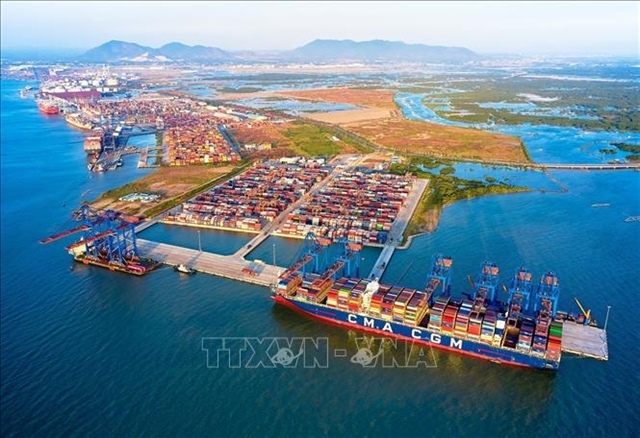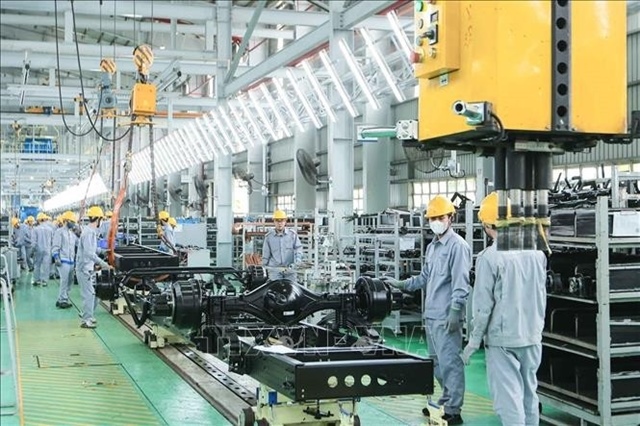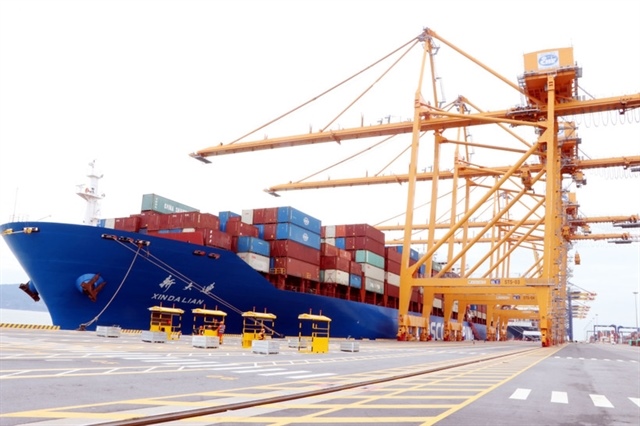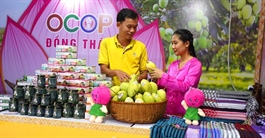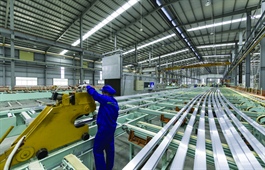Viet Nam sees growth in garment exports in first five months
Viet Nam sees growth in garment exports in first five months
Viet Nam achieved high export growth in the first five months of this year as businesses strived to promote investment in production and exports.

In the first five months of the year, Viet Nam's textile and garment export value reached US$18.7 billion, up 23.5 per cent.
According to Nam Dinh Textile and Garment Corporation (Natexco), its revenue was more than VND1 trillion in the first five months, 23 per cent higher than the same period last year.
At present, the corporation has orders to produce until the end of September. It is also continuing to negotiate with partners about year-end orders.
Besides that, Natexco will continue to restructure its resources for becoming a textile centre in the northern region, meeting the demands of the domestic market and exports.
Natexco deputy general Nguyen Thi Khanh said the Textile 1 JSC had completed its factory No 2 meeting European standards, while factory No 1 reached those standards in 2017. The factories would give Textile 1 JSC an opportunity in developing its brand and promoting exports.
Deputy General Director of Viet Thang Corporation Dau Phi Quyet said that in the first quarter of 2022, despite many difficulties and challenges, the corporation brought in 25 per cent of the revenue plan and 35 per cent of the profit plan.
However, the conflict between Russia and Ukraine had caused instability in the world supply chain and the risk of supply disruption. Both high input cost and cost of logistics and petrol forced the textile and garment companies to find ways to adapt.
So far, the supply of raw materials and accessories of Viet Thang had been basically stable. However, importing spare parts, equipment and supplies from Europe would take 12 to 20 weeks, higher than the 6-8 weeks before. If this situation does not improve, it would affect its production and export plans.
Meanwhile, the chairman of Viet Nam National Textile and Garment Group (Vinatex) Le Tien Truong, said that Vinatex gained a growth of 50 per cent in revenue during the first quarter of 2022.
However, Vinatex also faced many challenges impacting negatively on the domestic textile industry as well as the group in the first quarter, including the Russia-Ukraine conflict and a reduction in the economic growth of developed regions like the US and EU.
Vinatex general director Cao Huu Hieu said that it gained the results due to previous investment in preparing raw materials. In 2015-2020, Vinatex invested in a number of yarn production projects with modern technology to produce common high quality products.
In 2021, Vinatex also put two yarn production projects into operation to increase Vinatex's yarn production capacity to more than 50,000 spindles.
Most of the group's yarn production companies had enough orders signed by the end of 2021 to produce until the end of 2022.
For the garment industry, after the pandemic was under control, member companies quickly stabilised labour and recovered effective production.
The garment companies have enough orders to produce in the second quarter, and many have signed contracts to produce until the end of the third quarter or even the end of this year.
To promote the export of textile and garment products, enterprises must continue investment in expanding production facilities and proactively supply materials and auxiliary materials to meet rules of origin and take export opportunities from new-generation free trade agreements, experts say.
In addition, market research should be promoted to develop short- and long-term strategies and goals. Risk management is also a top priority.
For free-on-board (FOB) businesses, it is necessary to carefully study the market and not sign contracts too early to avoid the risk of low prices not keeping up with the increase in input material prices.
FOB service suppliers help their clients in almost every stage of the manufacturing process. They arrange to source materials, carry out inbound logistics, cut the garments, make products, and do packaging and carry out outbound logistics.



